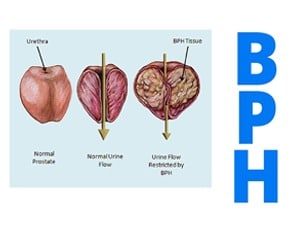NEW YORK, NY (PRWEB) AUGUST 10, 2016
According to Dr. David Samadi ‘many men assume that BPH is simply an inevitable part of aging and they have to live with the symptoms. Even though BPH is not cancer, if left untreated, it has the potential of leading to issues of urinary tract infections, bladder or kidney stones, blood in the urine or kidney damage.’
Benign prostatic hyperplasia (BPH) is one of the most common disorders affecting men as they grow older. When that happens, a man faces the decision of living with the side effects of an enlarged prostate or choosing surgery to eliminate them and possible serious medical complications. BPH affects 50% of men in their 50s and by the time a man reaches his 70s as many as 90% can be affected by BPH.
As a result of BPH, the swollen prostate will press on the urethra blocking urine flow. The need to urinate often is a common symptom, sometimes as frequently as every one to two hours, especially at night.
Other symptoms may include:
- Feeling that the bladder is full right after urinating
- Urgency to urinate
- Weak urine flow
- Dribbling of urine
- The need to stop and start urinating several times
- Trouble starting to urinate
- The need to push or strain to urinate
Button TURP and Green Light Laser are the most commonly used less invasive treatment options for BPH. Bipolar cautery vaporization, or button TURP, is a newer, less invasive variation of what has traditionally been the mainstay for treating BPH known simply as TURP.
Traditional TURP
TURP is where the surgeon inserts a well-lighted scope into the urethra using a wire loop or laser to cut and remove excess prostate tissue one piece at a time. This older version had increased risks of bleeding, incontinence, and impotence as well as a one to five day hospital stay and significant restrictions on activity for a six-week postoperative period.
Button TURP
The newer improved version, button TURP, does not use a wire loop or laser but instead uses a small, button-shaped device to vaporize the prostate tissue. It also uses low-temperature plasma energy, instead of heat, to remove prostate tissue. Once the extra tissue is removed under anesthesia, the area around it is sealed off to prevent bleeding.
‘It is still just as effective as traditional TURP at shrinking the prostate but with fewer complications, like bleeding after surgery and can shorten the time a man has to use a catheter after surgery’ said Dr. Samadi.
Button TURP also has an advantage post-surgery of preventing a rare but very serious complication called TUR syndrome. With traditional TURP, the surgical area is washed with a solution keeping the area clean. Because the solution is low in sodium, if it gets into the bloodstream, it can lower sodium levels in the body. Button TURP uses a saltwater or saline solution which prevents TUR syndrome. This allows the surgeon to spend more time doing the procedure meaning they can work on larger prostates or perform more complex surgeries.
Green Light Laser
Laser prostate surgery also known as green light laser, is a treatment using high powered laser energy to remove enlarged prostate tissue by vaporizing the tissue with the aim of leaving a wide channel to restore normal urinary function. Under anesthesia, a small flexible fiber-optic is inserted into the urethra while pulses of light are sent through the fiber cutting away the prostate tissue obstructing urinary flow.
Analysis of both procedures
Both button TURP and green light laser have similar advantages: both are either an outpatient or overnight procedure, both have less chance of bleeding, there’s a faster return to activities, and reduced time period of catheterization.
For most patients, the procedures does not interfere with sexual function and men should still be able to achieve an erection and orgasm as they did preoperatively.
An advantage button TURP has over green light laser is that the surgeon is able to retrieve a sample of the prostate tissue to be examined for any signs of prostate cancer. In addition, it takes a shorter period of time, about 60 minutes, to remove more tissue with button TURP over green light laser. Many men will also experience fewer post-surgery symptoms when button TURP is performed over laser surgery.
Ultimately, the decision of which one to use should be guided by an experienced urologist who has performed numerous surgeries using both button TURP and green light laser. They can help a man determine the course of action to take to achieve the best results.
Patients newly diagnosed with Benign prostatic hyperplasia (BPH) can contact world renowned prostate cancer surgeon and urologic oncologist, Dr. David Samadi, for a free consultation by calling 212-365-5000.


